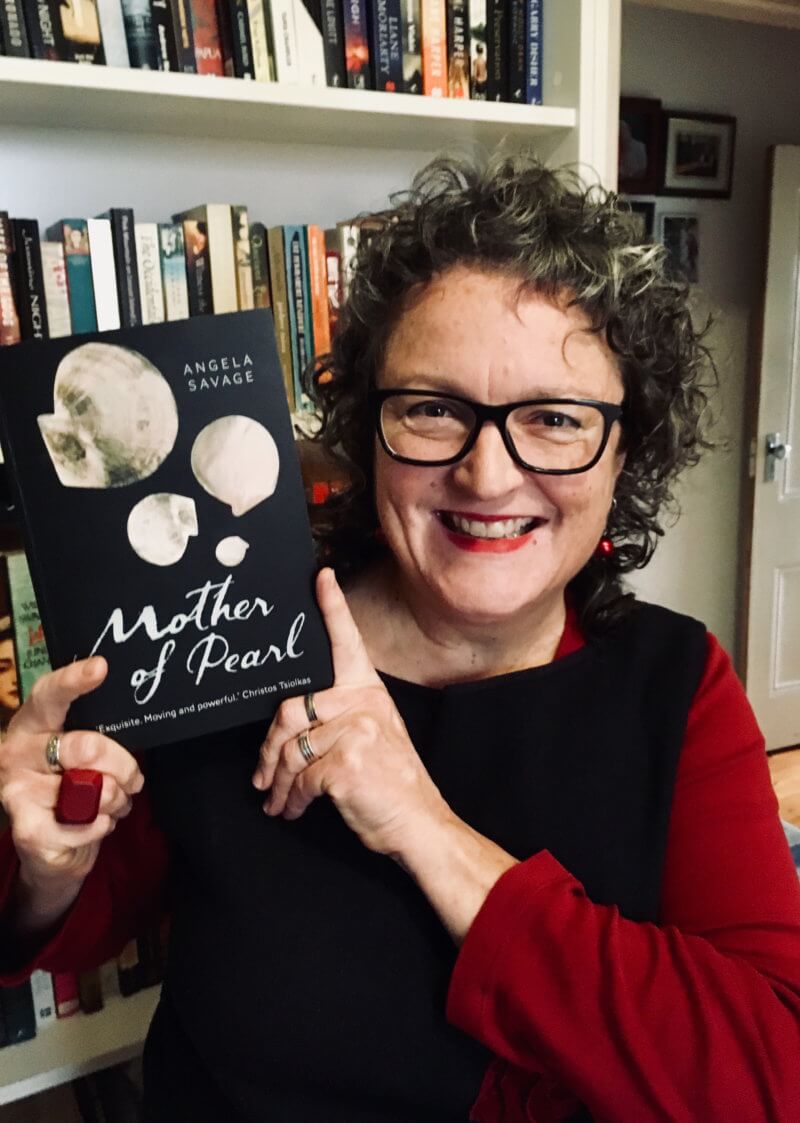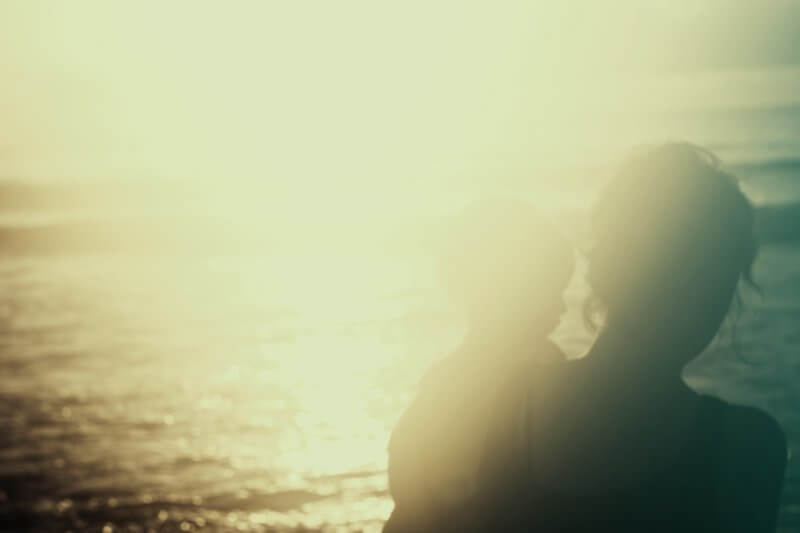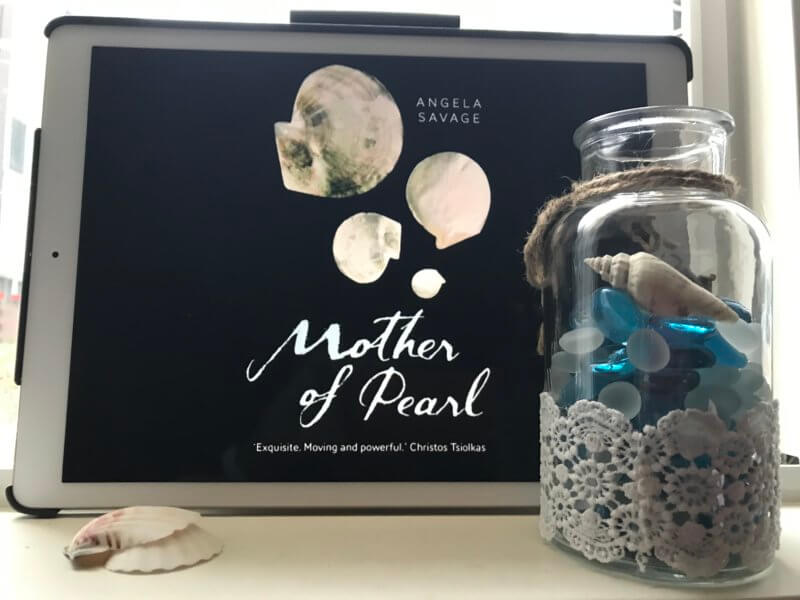
Mother of Pearl is the latest novel by Angela Savage. It is set in Thailand and Australia. When Anna returns home to Melbourne, Australia, from living in Thailand, Cambodia and Lao for years, her sister, Meg learns about surrogacy in Thailand from Anna’s friends. Seeing a glimmer of hope, Meg embarks on the journey to have a child through a surrogacy agency in Bangkok. Anna decides to help her sister and meets Mod, the surrogate mother. What follows is a story of women coming together to help each other without knowing how much this baby means to each of them.
I had the opportunity to read an advanced reader copy of this book through NetGalley as well as talk to Angela Savage about her inspiration for the story, book recommendations and much more! My thoughts on the book can be found in this post.
My curiosity about Mother of Pearl
- You mentioned in the book that Mother of Pearl came out your PhD work. Tell me more about your research!
I’ve always been curious about surrogacy and about Thailand, and when I found out Australians were going to Thailand and hiring Thai women to have babies for them, I recognized the seed of an idea for a novel. I read a great deal about surrogacy in the course of my PhD research, and also interviewed surrogate mothers, ‘intending parents’, clinicians and lawyers. My research identified three distinct schools of thought on the topic, both in academic writing and in the media: those wildly in favour (‘the neoliberals’); those vehemently against (‘the abolitionists’); and those who support surrogacy, provided it is carefully regulated (‘the harm reductionists’). I was troubled by the complex political and ethical issues raised by surrogacy, while also aware of the intense emotions at stake. Surrogacy is messy, and academic writing doesn’t lend itself to messiness. So I turned to fiction. - Mother of Pearl is a touching story about two sisters – one who wants to have a child and another to support her the best she can. Then, there is Mukda, the surrogate mother herself. What prompted you to explore surrogacy from these three angles?
This was largely a response to my research. I felt that fiction offered a way to explore surrogacy that was fluid and nuanced, truer to its messiness and complexity. As well as the difference of opinion between the two sisters, Anna and Meg, I also explore surrogacy from the angle of Mukda, the Thai surrogate mother, and other minor characters along the way. It’s important for me that readers see the different points of view and make up their own minds about surrogacy. - In your research, did you find other countries that are conducive to surrogacy in the same manner as Thailand? You mentioned India but did not choose it as the setting for the novel and I am curious why.
You are right to be curious, as commercial surrogacy had been legal in India since 2002 and was a much more established ‘market’ (it was banned in 2018). I chose to write about Thailand rather than India for two reasons. The first is that I’ve spent much more time in Thailand than I have in India: I first visited Bangkok as a teenager in the 1980s, and spent two years there in the ’90s; and though I’m no expert, I have some familiarity with Thai culture, language and history. The second is simply that there is a lot less written about surrogacy in Thailand than there is about surrogacy in India and, as a student and as a writer, I wanted to explore less familiar territory. I read several novels about surrogacy in India in the course of my research, including Origins of Love by Kishwar Desai and The House of Hidden Mothers by Meera Syal, both of which I highly recommend. - Mother of Pearl is set in Thailand and Australia. What do you find to be the most fascinating aspect of writing a novel that touches on such diverse cultures? What would you recommend to aspiring writers who wish to write a multicultural novel?
I love writing work that touches on diverse cultures because I love reading work that does this. I suspect that in Canada, as in Australia, debate rages about who can write what, and about the ethics of writing across boundaries of identity. But I’ve always read and enjoyed the work of both ‘insiders’ (Own Voices) and ‘outsiders’. I agree with author Hari Kunzru who says that, ‘Attempting to think one’s way into other subjectivities, other experiences, is an act of ethical urgency’. But I also agree that such attempts must come from a place of humility and respect.
I wrote an article called The Responsible Writer, which pretty much sums up my advice to writers aspiring to write across cultural boundaries: think hard about why you want to do it; do your research; consult with the community you’re writing about; listen and be open to criticism at every stage of the process. - What are some books that you would recommend to your readers who loved this novel about family and conception?
In addition to the two novels mentioned above, I recommend Her Giant Octopus Moment by Kay Langdale. The story centres on Joanie Simpson, who agrees to be a surrogate mother but (as we quickly discover) fakes a miscarriage so she can keep the baby, whom we meet as 11-year-old Scout. The novel raises questions of what it means to be a parent, but it’s the wonderful characters who stay with you. - What is your next book about? Have you started writing it already? 🙂
Not long after finishing my PhD, I started a demanding job that makes it difficult for me to find time to writer. Ironically, that job is running the peak body for writers in my home state! When I can, I work on short stories and essays. And I’m doing what I like to call ‘percolating’ a new novel, mulling over the characters and story. But I can’t tell you what it’s about for fear of jinxing it!

My curiosity about Angela Savage’s writing routine and more
- What inspired you to become a writer?
I became a writer because I love reading. I aspire to give readers the same sort of pleasure from reading my books that other writers have brought to me. - Apart from fiction and non-fiction, you have also worked on comics. What advice would you offer to someone who wants to give creating comics that a try?
If you can’t draw, find someone who can! My talented friend, Bernard Caleo, has drawn the few comics that I have written. - I know you are an avid reader, so I have to ask about your reading list! 🙂 Are there any books that you go back to reread from time to time and why?
You know, I rarely re-read books, not because I don’t want to, but because I have a monstrous TBR [to be read] pile that must be appeased! The exceptions are what I think of as my ‘mentor texts’, the books that teach me: The English Patient by Michael Ondaatje; The Handmaid’s Tale by Margaret Atwood; The Poisonwood Bible by Barbara Kingsolver; Salman Rushdie’s essays, especially ‘Outside the Whale’; and A Room of One’s Own by Virginia Woolf. - Are you the kind of reader that can read anywhere or there is a specific spot or ambience that helps you cozy next to a book for uncountable hours?
I would read books in a boat
And I would read them with a goat
And I would read them in the rain. And in the dark. And on a train.
And in a car. And in a tree. They are so good, so good you see…
I will read them here and there. Say! I will read them anywhere!
(with apologizes to Dr Suess!) - What would you tell your younger self when it comes to writing?
I wouldn’t want to spoil the surprise for my younger self of telling her that one day her dream of becoming a published author will come true. But I’d tell her not to give up. And I’d suggest she’s get more writing done if she went out less often!
Angela Savage’s interview is one the most enjoyable interviews I have ever conducted. I love that writing not only connects us to other writers but also to avid readers. I hope that in the near future, Angela and I will be able to read and discuss a book together, collaborating about the one thing we love the most – reading! Believe it or not, I actually have a hoodie with Dr Seuss’ exact words that Angela mentioned above! 🙂

Mother of Pearl is now available in stores. My thoughts on it can be found here. 🙂

Photo of mother and child by Matt Hoffman on Unsplash
Feature image of the pearl by Matthew Fassnacht on Unsplash

Be First to Comment